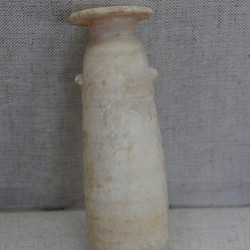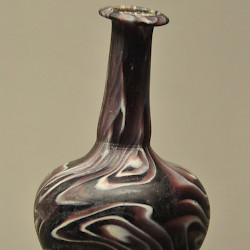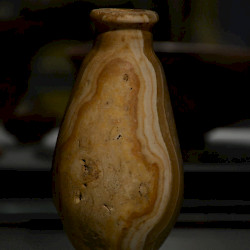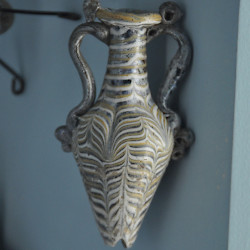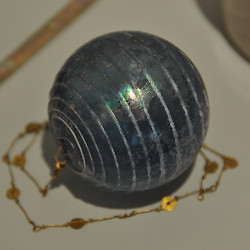Alabastron
Alabastron (Greek ἀλάβαστρον): small bottle, made of soft stone or glass, containing perfume.
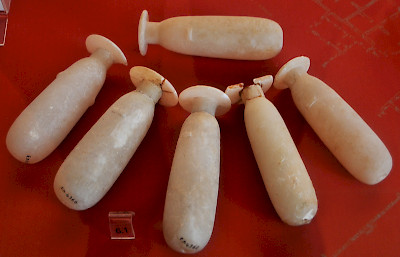
In Antiquity, "alabastron" was the name of small perfume bottles. As indicated by the name, alabastra were originally made of a soft type of stone (onyx alabaster). When made of glass, they were typically decorated with lines that were meant to represent the typical layers of stone alabaster. These perfume bottles were usally quite long, with a tapering shape. In the Roman world, perfume bottles could have different forms, e.g., spherical or bird-shaped. Alabastra made of tin and gold are known as well. An alabastron was usually sealed with a piece of lead.

Alabastra with expensive perfume were considered impressive presents. The Persian king Cambyses sent a perfume bottle to his colleague in Nubia.note
"Breaking the alabastron" appears to have been a standard expression for the festive moment of removing the seal. This is the only rational explanation for the mysterious Biblical verse:
While Jesus was in Bethany, reclining at the table in the home of Simon the Leper, a woman came with an alabaster jar of very expensive perfume, made of pure nard. She broke the jar and poured the perfume on his head.note
Since it is, unless one uses a sledge hammer, impossible to break a jar of alabaster, the expression "breaking the alabastron" must refer to removing the seal.
Literature
Richard Kroes, "Smashing bottles. An Archaeologist Reads a Gospel" in: Ancient History Magazine 1 (2015) 64-66



